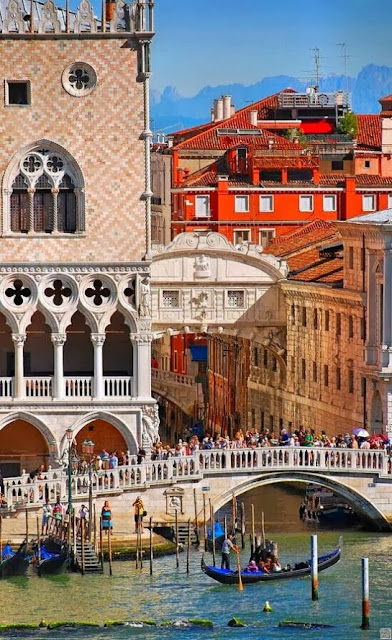History of Venice: How did the city of Venice built?.
How is the city of Venice built?
Many questions cyber sailors line the history of Venice: How is the city of Venice built, why Venice is in the water, why Venice is surrounded by water?? history of Venice Norwich, History of Venice John Julius Norwich , Antioquia history of Venice, Venice history pdf, history of Venice as built and other key words show the interest of legitimate users by this uncertainty can only be revealed if we try to go down to the deep sea of history.
How is the city of Venice built?
Through the seas of Italy a wonderful city that half on water and half on land built stands. Whoever has visited probably wondered why men bother to build these wonderful palaces and cathedrals in the Mediterranean sandbars when they had all the mainland of Italy behind them were taken. Maybe Venetian prompted some reason, and he will tell the story of the men of Venice and is one of the first stories of freedom.
Many centuries ago, the beautiful land of Italy was painfully overwhelmed by barbarians who descended wild north of the Alps. It was like a whirlwind, trampling the vineyards and setting fire to cities and towns. The first to arrive was Alaric with his Goths, and all the world was devastated by their armies, when they moved towards Rome. Then Alaric died and was buried in Busento river, and for a time the earth rested.
Under the Alps came to cities in northern Italy, with its halls and villas carved marble. Padua and Concordia, Milan, Turin and Aquileia fell before him, but the last town to fall was Aquileia. For three months, the city took was besieged, and the barbarians, who were accustomed to sieges were in science. One day looked like Attila the walls of the city and wondered how he could get past them, I saw storks leave their nests and fly with their young away from the city. He knew that hunger had set, and was glad that the stubborn citizens should defer to the prospect of starvation.
According to tradition, Venice was founded in 421 AD. Then a Celtic tribe called the Veneti lived along the coast of what is now northeastern Italy. From 49 BC Roman citizens were. However in 453 Attila invaded Italy. Some fled to the lagoon islands and built the first settlement. Soon a loose federation was formed. Then, in a town called 568 the Lombards invaded the continent and many Venetians fled to the islands increasing population.
At first Venice was controlled by the Byzantine Empire (the eastern half of the Roman Empire, which survived the fall of Rome). However, in 726 the Venetians gained independence and elected as Doge Orso Ipato (their word for Duke).
In 810 the Franks tried but could not defeat the Venetians. Meanwhile Venice flourished as a commercial center and the ships sailed to and from its ports. Its population grew steadily. 828 San Marcos body was smuggled from Egypt to Venice. San Marcos became the patron saint of the city.
In the Middle Ages Venice continued to flourish as a port and commercial center. Meanwhile, in 1199 a fourth crusade was proposed. The Venetians decided to build a fleet of ships to transport the Crusaders. However, the cross mounted army could not pay for the ships. So the Venetians persuaded them to join an expedition to attack Constantinople. Venetians and crusaders took the city in 1204 and ransacked. Venice was also involved in other wars at that time. The Italian city of Genoa was a powerful rival of Venice in the thirteenth and fourteenth centuries, the Genoese and Venetians fought five wars.
In addition, in 1348 the Black Death devastated the population of Venice. Thus in 1403 Venice introduced quarantine. Ships from infected areas had to stop at an island called Lazaretto and the passengers had to wait 40 days before being allowed to enter the city.
Turkish - In the fifteenth century Venice faced a new threat. Captured Constantinople in 1453 and then advanced towards southeastern Europe. In 1489 Venice came to rule Cyprus. However, in 1571 the Turks conquered the island.
In addition, several European countries in 1508 formed the League of Cambrai and went to war against Venice. But after 8 years of war map was largely unchanged.
More serious for Venice was the discovery of America. The result was that trade moved away from the Mediterranean. Moreover Venice in 1630 was hit by a plague again.
During the seventeenth century Venice was losing power and influence. In the eighteenth century Venice was politically unimportant, although the arts such as opera flourished. Then in 1797 Napoleon dissolved the Republic of Venice. However after his death in 1815 it passed to Venice to Austria.
The railroad arrived in Venice in 1846. But Venice was unsuccessful under Austrian rule. In 1848 revolutions swept Europe and Venice rebelled against the Austrians. For a short period Daniele Manin became president of an independent Venice. However the Austrian forces bombarded the city and Venice was forced to resign in August 1849. However, in 1866 the Austrians were defeated by the Prussians and Venice was allowed to join the new nation of Italy.
In the nineteenth century Venice thrived as a port and manufacturing center. Then in 1933 Mussolini built a road sign to Venice land. During World War II Venice was damaged by the fighting.
In 1966 Venice experienced a severe flood, but the city recovered soon. Today tourism is the mainstay of Venice. However, the population of Venice has fallen dramatically since the mid-nineteenth century. Today the population of Venice is 271,000 inhabitants.
Subscribe to:
Post Comments
(
Atom
)














No comments :
Post a Comment